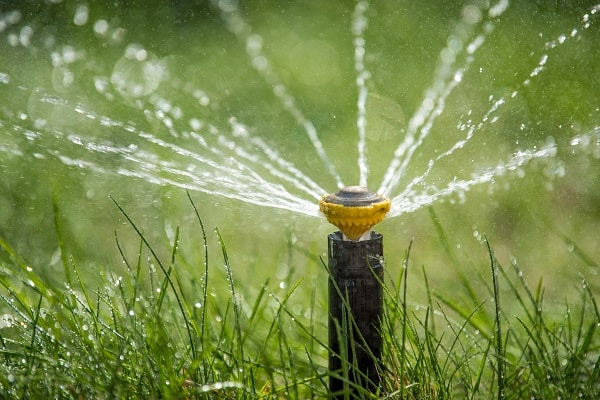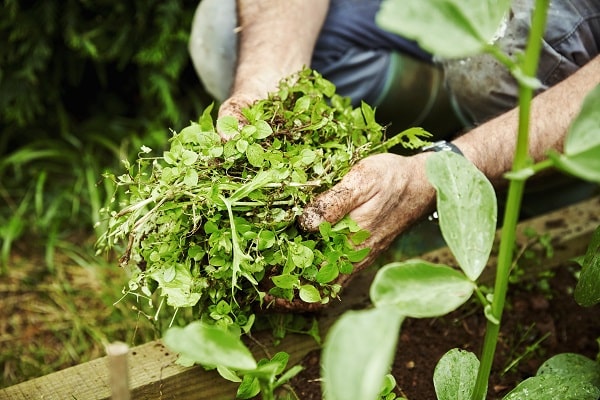Cultivating a verdant, thriving lawn can be an immensely satisfying experience, offering not just aesthetic beauty but also a rich playground for various outdoor activities. However, the journey to a lush lawn is not always straightforward, especially when it comes to the persistent challenge of weed control. Understanding the intricacies of weed management, from selection of the right grass type to soil health and appropriate watering techniques, can lead to a marked reduction in unwanted vegetation. This article provides a comprehensive guide to minimize weeds, thereby paving the way to a lawn that is both aesthetically pleasing and ecologically balanced.
Contents
Choose The Right Grass
Choosing the right grass species is critical to establishing a resilient, weed-resistant lawn. The best grass type for a particular lawn depends on the local climate, soil type, and how the lawn is used. For example, certain grasses may be better adapted to shade, drought, or heavy foot traffic. When the right grass species for a specific location and lifestyle is chosen, it can outcompete most weeds, resulting in a healthier and more attractive lawn.
It’s essential to consider factors like grass growth habits, preferred climate, and maintenance requirements when choosing a grass type. Kentucky bluegrass, for instance, is popular for its lush appearance and cold tolerance, but it also requires regular watering and fertilization. In contrast, Bermuda grass can withstand hot, dry conditions and recovers quickly from wear, making it a good option for high-traffic lawns. Researching and selecting the appropriate grass type can go a long way toward preventing weed invasions.
Mulch Over Weeds
Mulching serves as an essential element in successful weed management. It involves the placement of organic or inorganic material around plants or over the ground surface to cover the soil. Mulch suppresses weed growth by blocking light, which prevents weed seeds from germinating. Additionally, mulch helps to retain soil moisture and maintain stable soil temperatures, benefiting desired lawn plants and grass.
Various types of mulch are available, each with unique advantages. Organic mulches, such as compost, wood chips, or grass clippings, can improve soil structure and fertility as they decompose. In contrast, inorganic mulches, like gravel or landscape fabric, don’t need to be replaced as frequently. When applying mulch, a layer about 2-4 inches thick usually suffices to prevent weed emergence. It’s also essential to keep mulch from direct contact with plant stems to avoid rot and pest issues.
Water Profoundly And Infrequently

Deep, infrequent watering promotes healthy lawn grass growth and discourages weeds. When grass is watered deeply, the moisture reaches the roots, encouraging them to grow deeper into the soil. This results in a stronger, more resilient grass that can outcompete weeds for resources.
On the contrary, frequent light watering encourages shallow root growth in grass, making it less able to survive stress and compete with weeds. Additionally, this creates an environment that is conducive for weed germination and growth. As a general rule, lawns benefit from about one inch of water per week, but this can vary depending on the type of grass and local weather conditions. It’s better to water in the early morning, as this allows the water to seep into the ground before the heat of the day causes it to evaporate.
Weed Regularly

Regular weeding helps to keep lawns looking their best and reduces the opportunity for weed species to proliferate. It’s most effective to remove weeds before they have the chance to produce seeds and spread further. There are numerous types of weeding tools available, including hand weeders, hoe-like tools, and stand-up weeders, each suited for different weed types and sizes. For best results, one should try to remove the entire weed, including the root, to prevent it from growing back.
Timing is also important when it comes to weeding. Early spring, before weeds start to seed, is often the best time to weed a lawn. However, it’s also beneficial to keep an eye out for new weed growth throughout the growing season. By tackling weeds as soon as they appear, it’s possible to prevent them from getting out of hand and overwhelming the grass.
Apply Pre-Emergent Herbicides
Pre-emergent herbicides provide a beneficial tool in weed management. These substances work by inhibiting weed seed germination, thereby preventing the weeds from ever growing. It’s crucial to understand that pre-emergent herbicides won’t kill existing weeds; they only prevent new ones from growing. Therefore, they should be applied early in the season before weed seeds have a chance to germinate.
The timing for applying pre-emergent herbicides varies depending on the types of weeds commonly found in the lawn. For instance, to control crabgrass, herbicides should be applied in early spring when soil temperatures reach 55-60 degrees Fahrenheit, which is when crabgrass seeds start to germinate. Always follow the manufacturer’s instructions for best results, including the correct timing, dosage, and safety precautions to take.
Try Organic Or Housemade Ways To Kill Weeds

Gardeners interested in eco-friendly methods may want to explore organic or homemade solutions to combat weeds. One popular method involves the use of household vinegar, which can be sprayed directly onto weeds. The acetic acid in vinegar will burn the weeds and cause them to wilt, usually within a day or two. This method works best on young weeds and might require multiple applications for larger, established weeds.
Another natural method involves boiling water, which can be poured directly onto weeds. The heat from the boiling water will kill the weeds down to the root, making it an effective option for weeds growing in cracks in driveways or walkways. While these methods can be effective, one should take care not to harm desirable plants or grasses in the process. These techniques can provide more environmentally friendly and inexpensive ways to manage weeds in a lawn.
Maintain Healthy Soil
The health of the soil in a lawn plays a significant role in weed management. Healthy soil encourages the growth of strong, robust grass that can effectively compete with weeds. Several strategies can be implemented to maintain soil health. One of these is to periodically test soil to measure pH and nutrient levels. This information can guide amendments to the soil, such as the addition of lime to raise pH or specific fertilizers to address nutrient deficiencies.
Adding compost to the soil can also significantly improve its health. Compost can improve soil structure, increase its capacity to hold water and nutrients, and promote the activity of beneficial soil organisms. Furthermore, it’s important to avoid compacting the soil, as compacted soil can limit grass root growth and make it easier for weeds to establish. This might mean aerating the lawn periodically to alleviate compaction, particularly for high-traffic areas.
Conclusion
Understanding and implementing these varied strategies can assist in achieving a healthier, more robust lawn that is more resistant to weed invasion. Mulching, selecting the appropriate grass type, deep watering, regular weeding, the judicious use of herbicides, considering natural weed control methods, and maintaining soil health are all crucial elements to this end. Each lawn is unique and will require a tailored approach for the best results. As time and effort are invested, one should see an improvement in both the appearance and health of the lawn, and, most importantly, a significant reduction in pesky weeds. It’s a process, but with consistent care and attention, a weed-free lawn is certainly an achievable goal.



